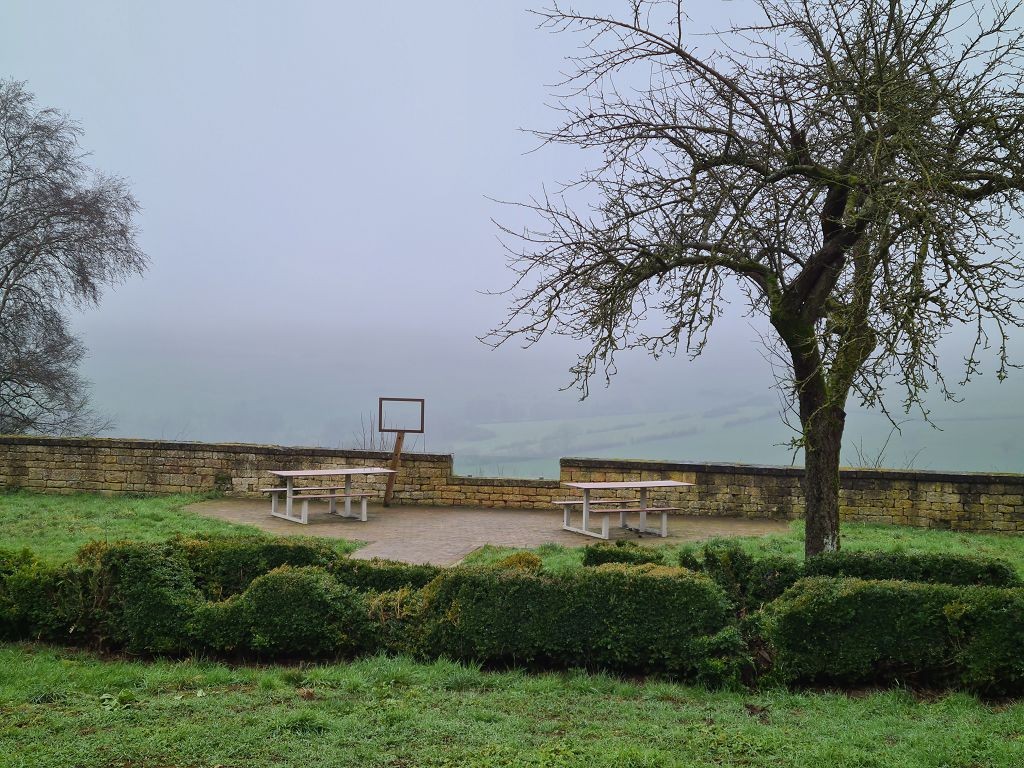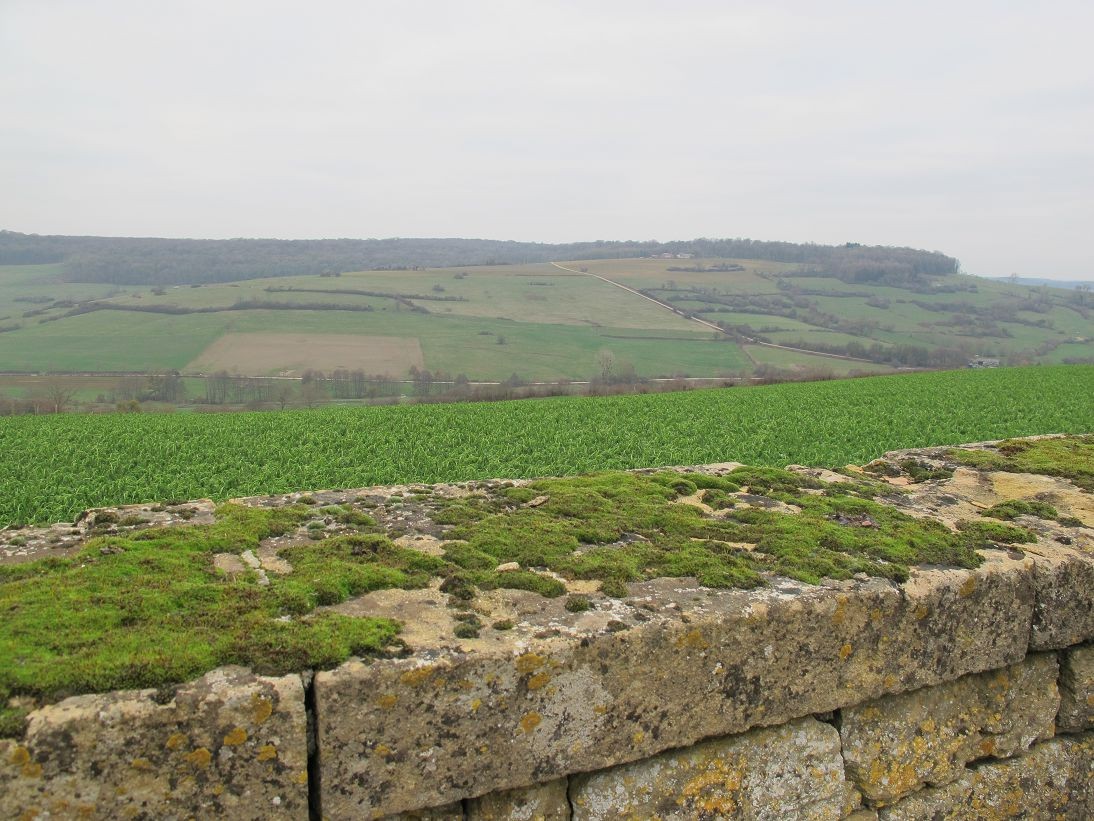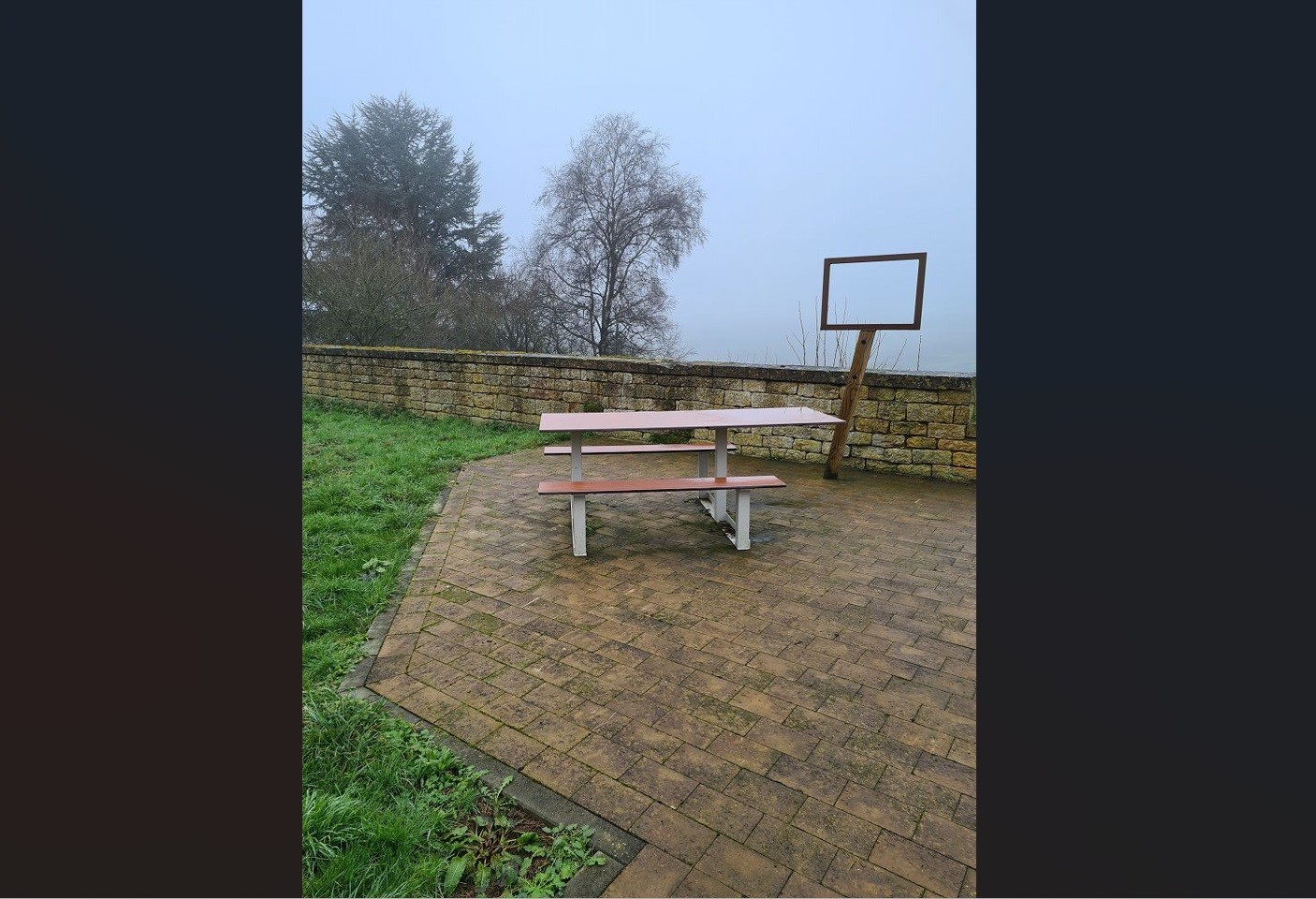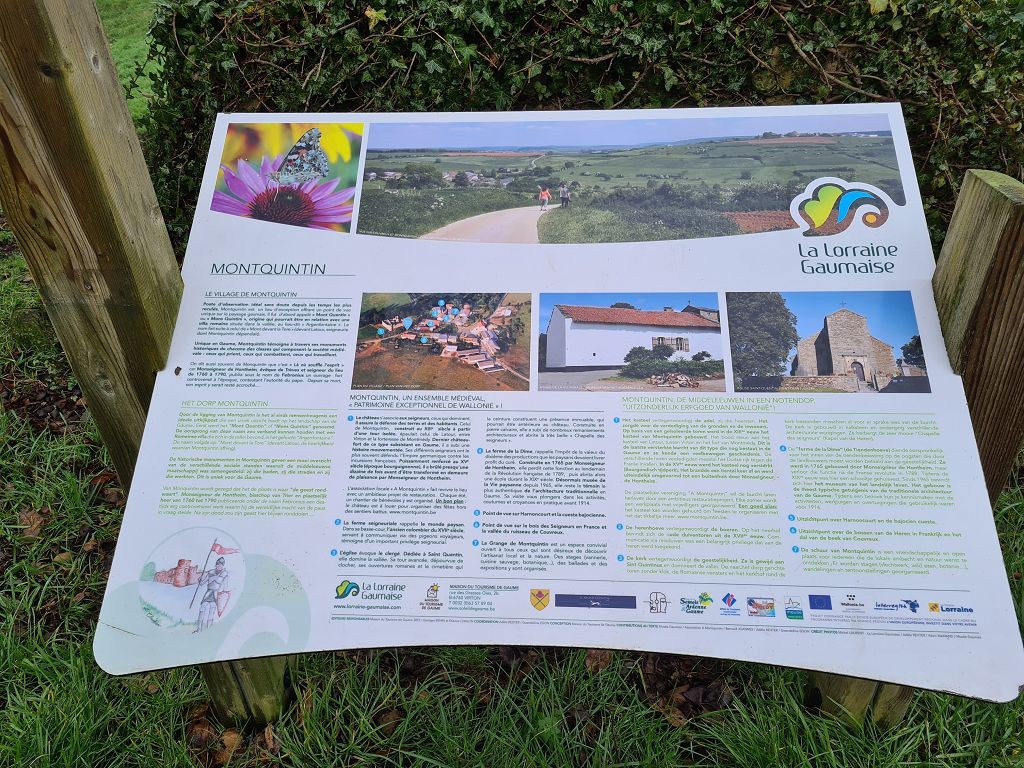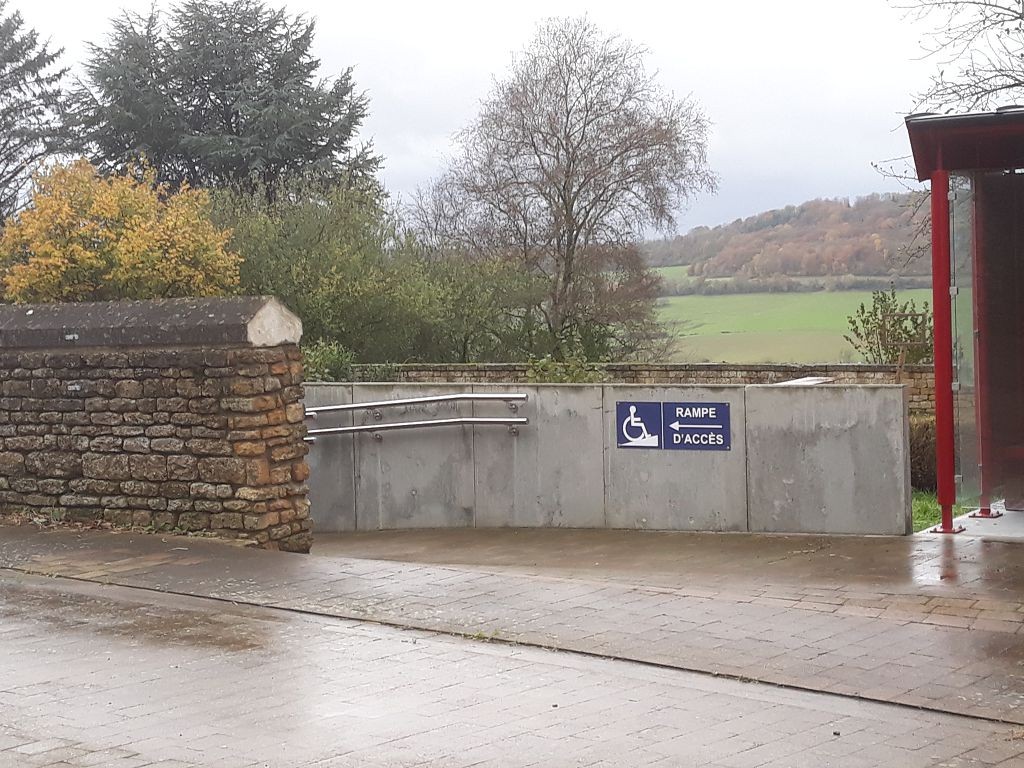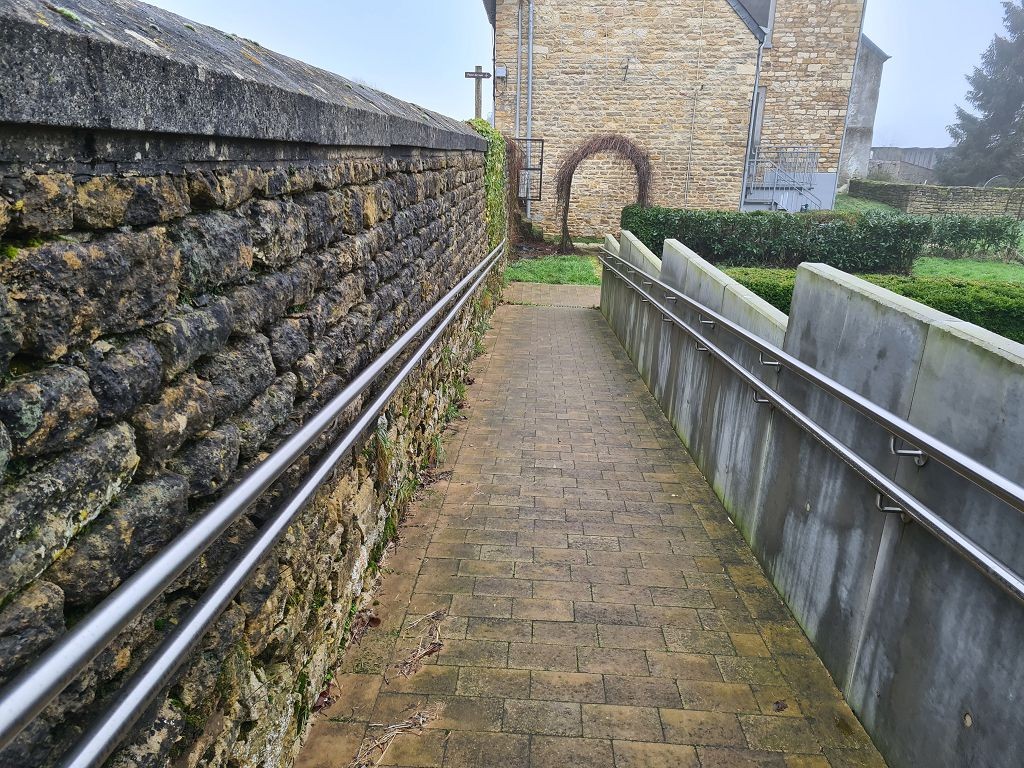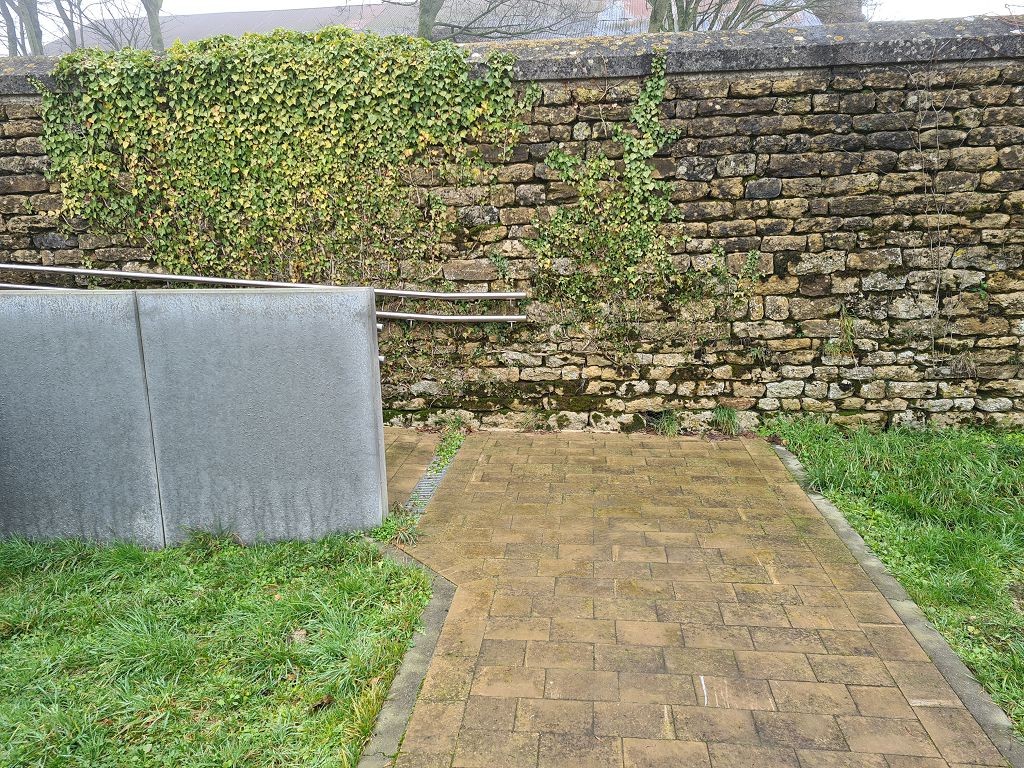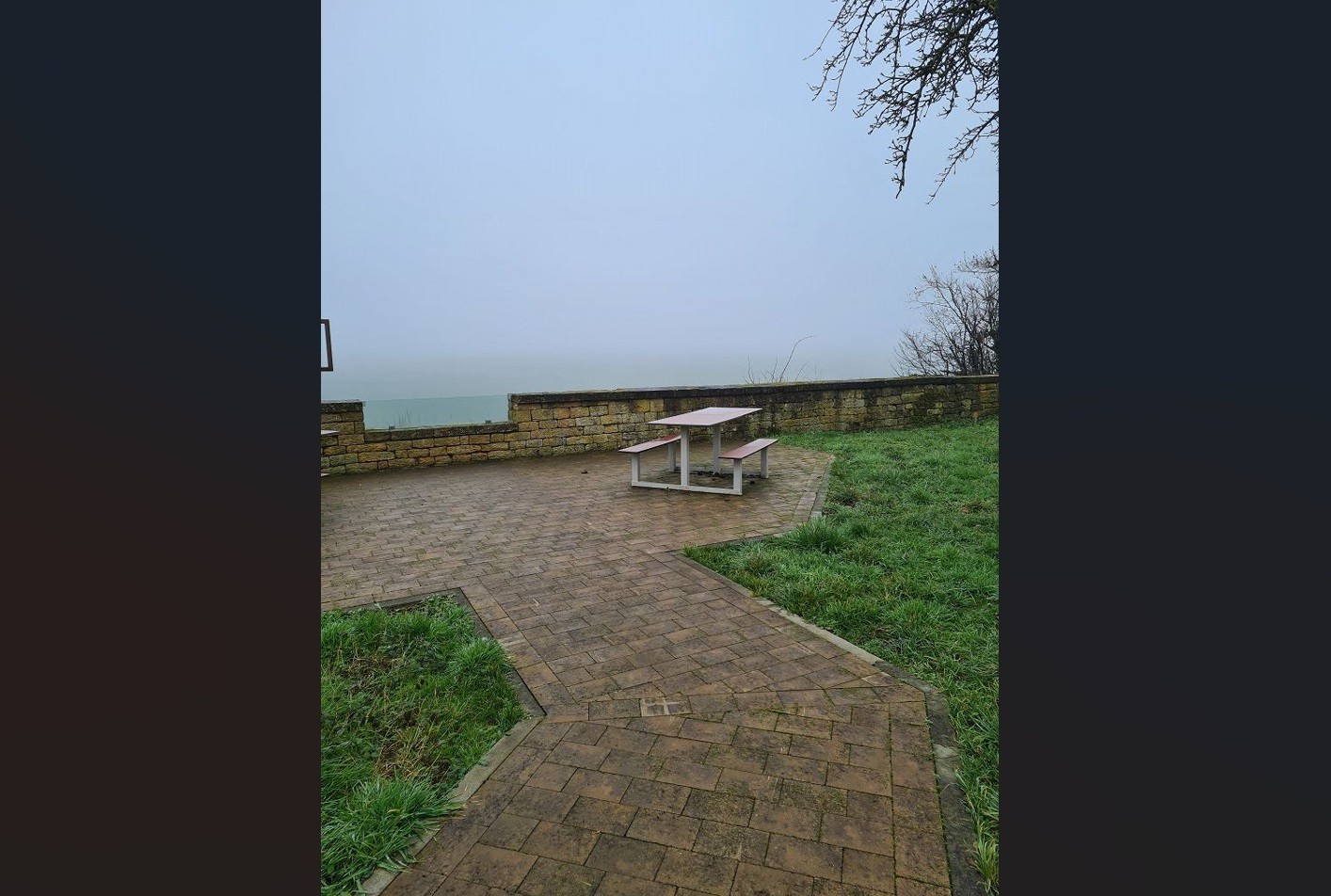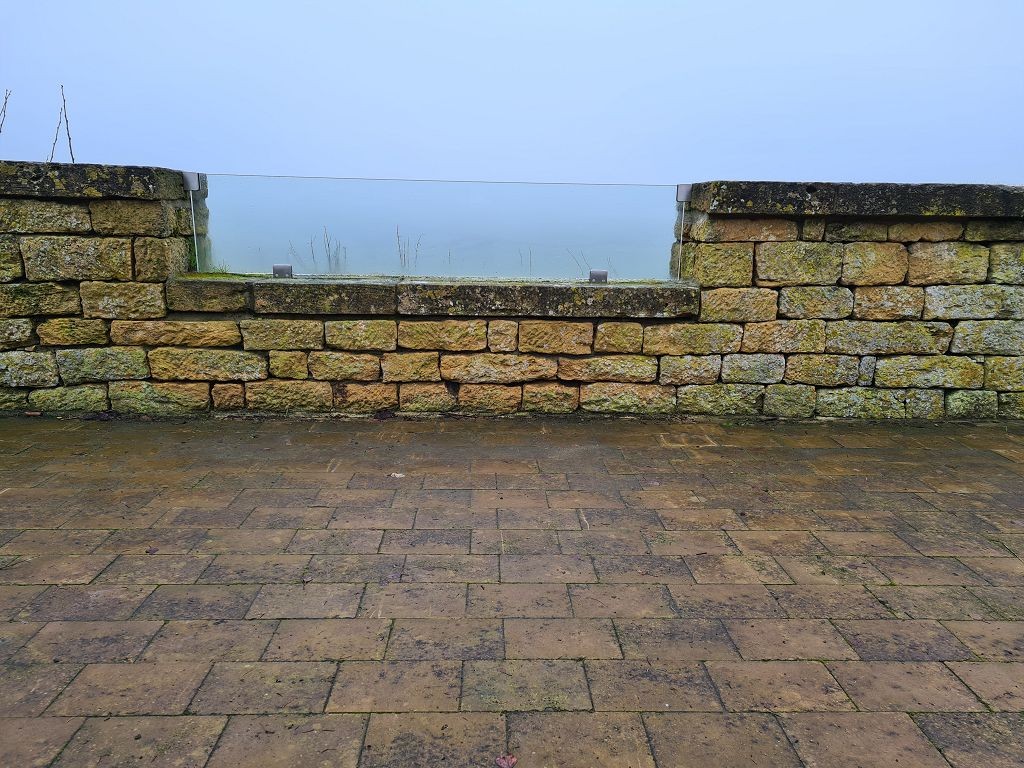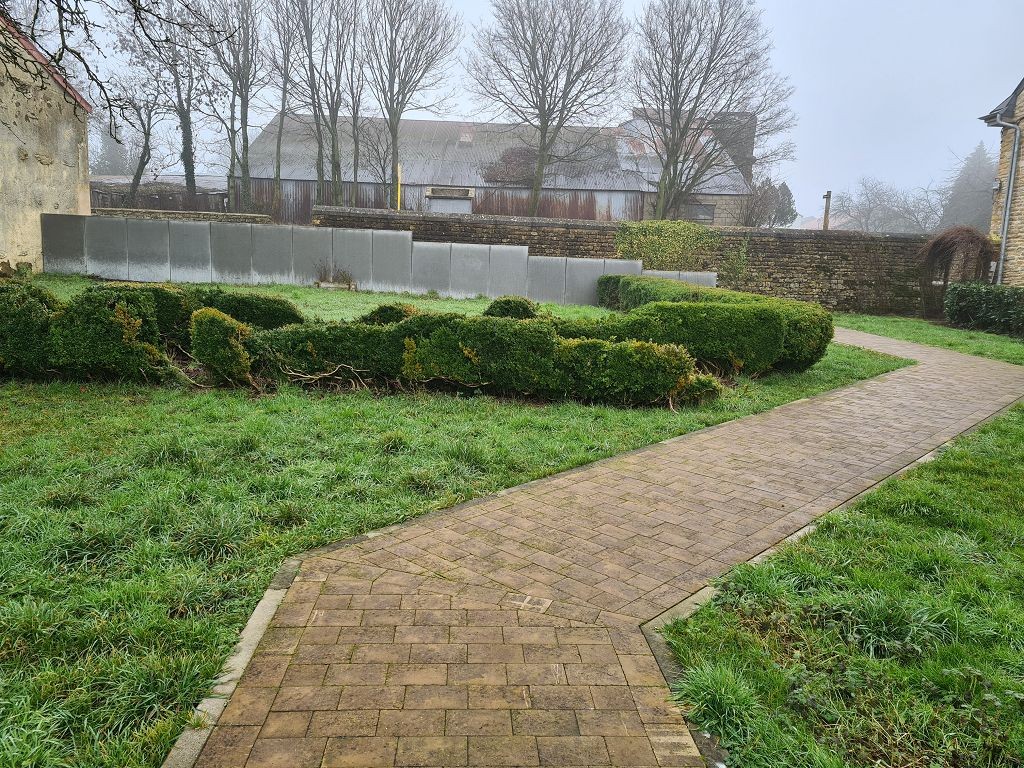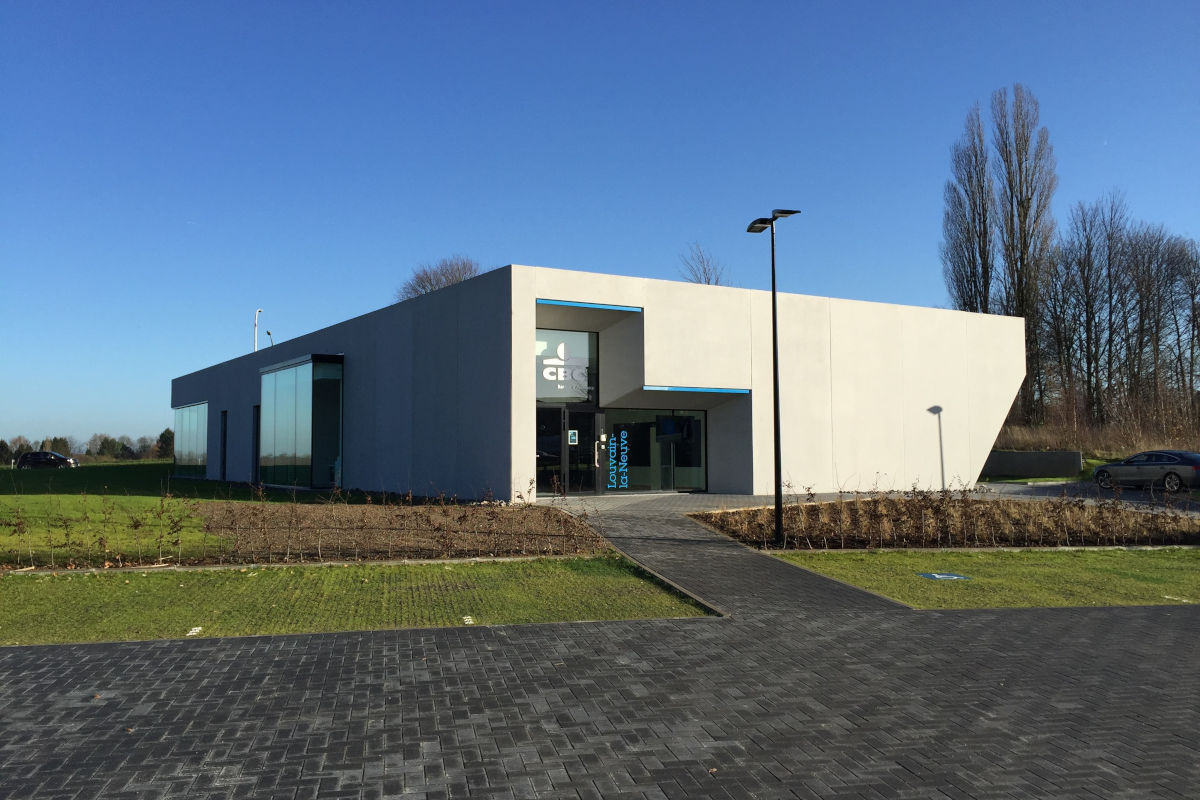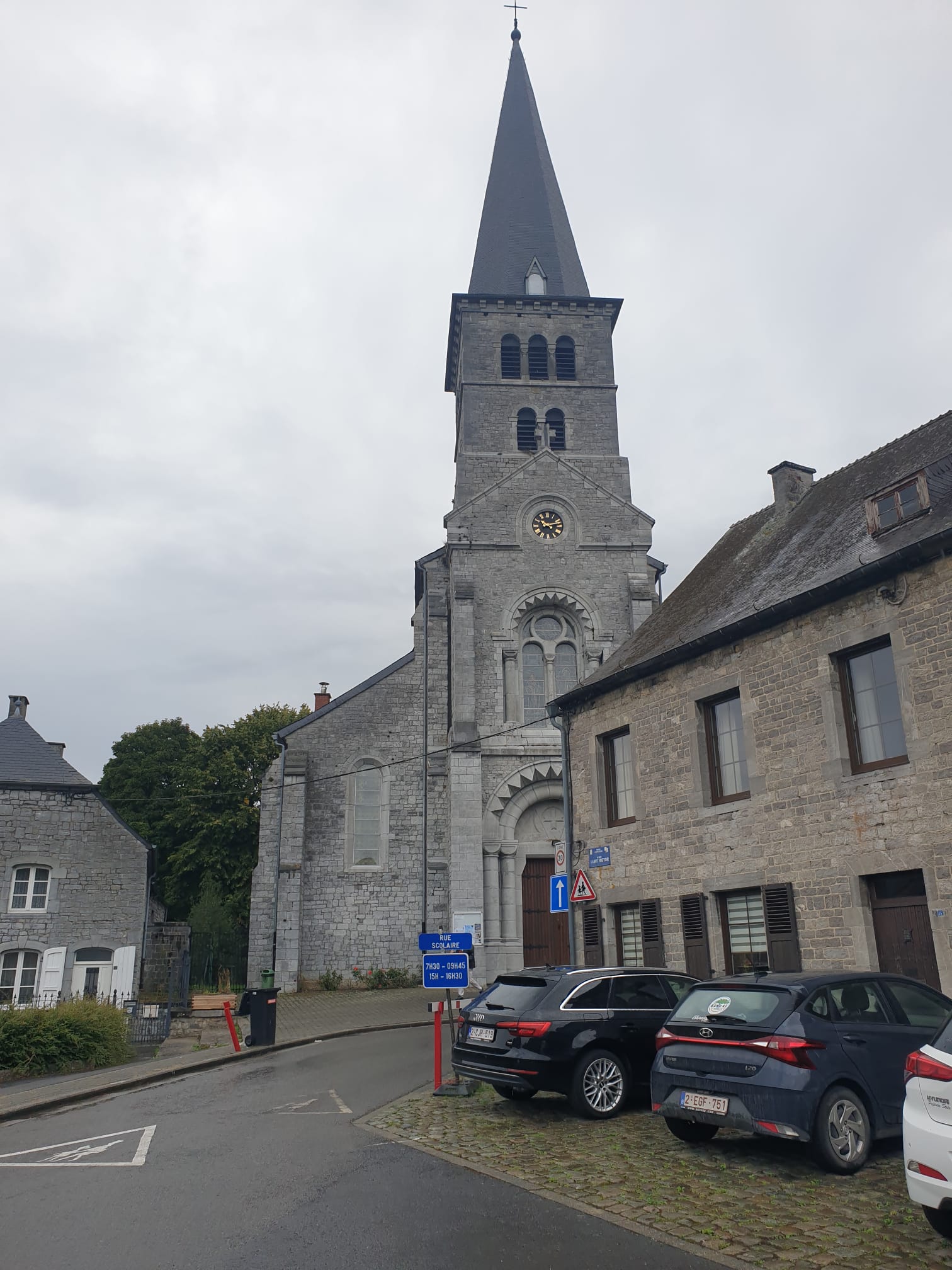Montquintin is a small village in the Gaume region on the southern border of Belgium in the municipality of Rouvroy. Together with its church, feudal castle and main farm (Ferme de la Dîme), it has been listed as part of Wallonia's exceptional heritage since 1996.
The renovation of the village, Montquintin Couvreux, focused on the barn, then the playground and its viewpoint. Next came the second viewpoint, the subject of this audit.
At the top of a hill at an altitude of 324 metres, around forty inhabitants live in an exceptional location.
The village is characterised by a group of buildings that is unusual in the region, at the convergence of four winding roads leading up from the valleys. At the top stand the ruins of a feudal castle. The Romanesque church of Saint Quentin, dating from before the 10th century, has medieval features.
On the square, the Ferme de la Dîme, built in 1765, was originally used to collect taxes from the clergy on agricultural crops. In the 19th century, it became the village school. The Musée Gaumais de Virton transformed it into a regional museum of rural life.
